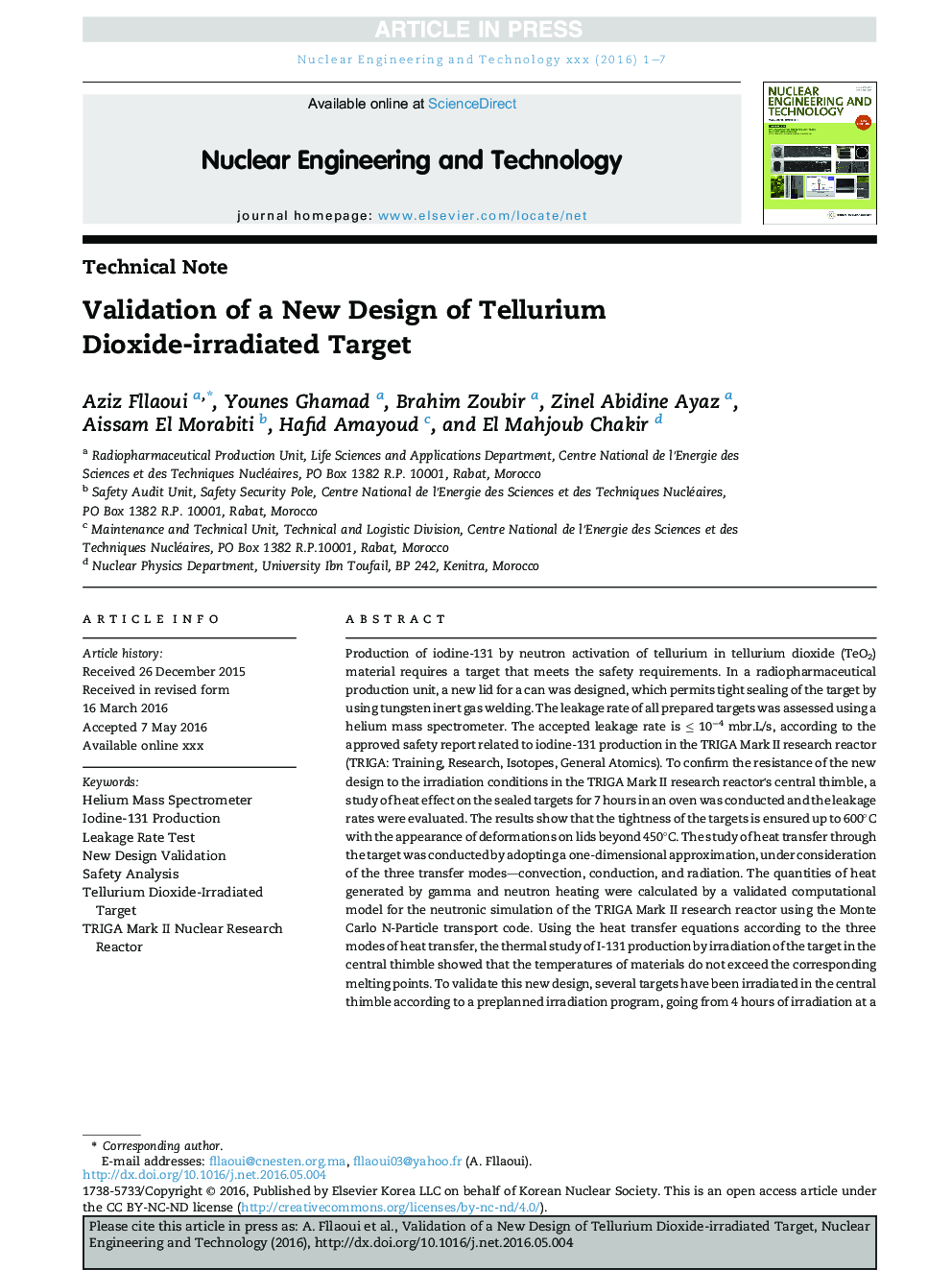| Article ID | Journal | Published Year | Pages | File Type |
|---|---|---|---|---|
| 5477862 | Nuclear Engineering and Technology | 2016 | 7 Pages |
Abstract
Production of iodine-131 by neutron activation of tellurium in tellurium dioxide (TeO2) material requires a target that meets the safety requirements. In a radiopharmaceutical production unit, a new lid for a can was designed, which permits tight sealing of the target by using tungsten inert gas welding. The leakage rate of all prepared targets was assessed using a helium mass spectrometer. The accepted leakage rate is ⤠10â4 mbr.L/s, according to the approved safety report related to iodine-131 production in the TRIGA Mark II research reactor (TRIGA: Training, Research, Isotopes, General Atomics). To confirm the resistance of the new design to the irradiation conditions in the TRIGA Mark II research reactor's central thimble, a study of heat effect on the sealed targets for 7 hours in an oven was conducted and the leakage rates were evaluated. The results show that the tightness of the targets is ensured up to 600°C with the appearance of deformations on lids beyond 450°C. The study of heat transfer through the target was conducted by adopting a one-dimensional approximation, under consideration of the three transfer modes-convection, conduction, and radiation. The quantities of heat generated by gamma and neutron heating were calculated by a validated computational model for the neutronic simulation of the TRIGA Mark II research reactor using the Monte Carlo N-Particle transport code. Using the heat transfer equations according to the three modes of heat transfer, the thermal study of I-131 production by irradiation of the target in the central thimble showed that the temperatures of materials do not exceed the corresponding melting points. To validate this new design, several targets have been irradiated in the central thimble according to a preplanned irradiation program, going from 4 hours of irradiation at a power level of 0.5 MW up to 35 hours (7 h/d for 5 days a week) at 1.5 MW. The results show that the irradiated targets are tight because no iodine-131 was released in the atmosphere of the reactor building and in the reactor cooling water of the primary circuit.
Keywords
Related Topics
Physical Sciences and Engineering
Energy
Nuclear Energy and Engineering
Authors
Aziz Fllaoui, Younes Ghamad, Brahim Zoubir, Zinel Abidine Ayaz, Aissam El Morabiti, Hafid Amayoud, El Mahjoub Chakir,
